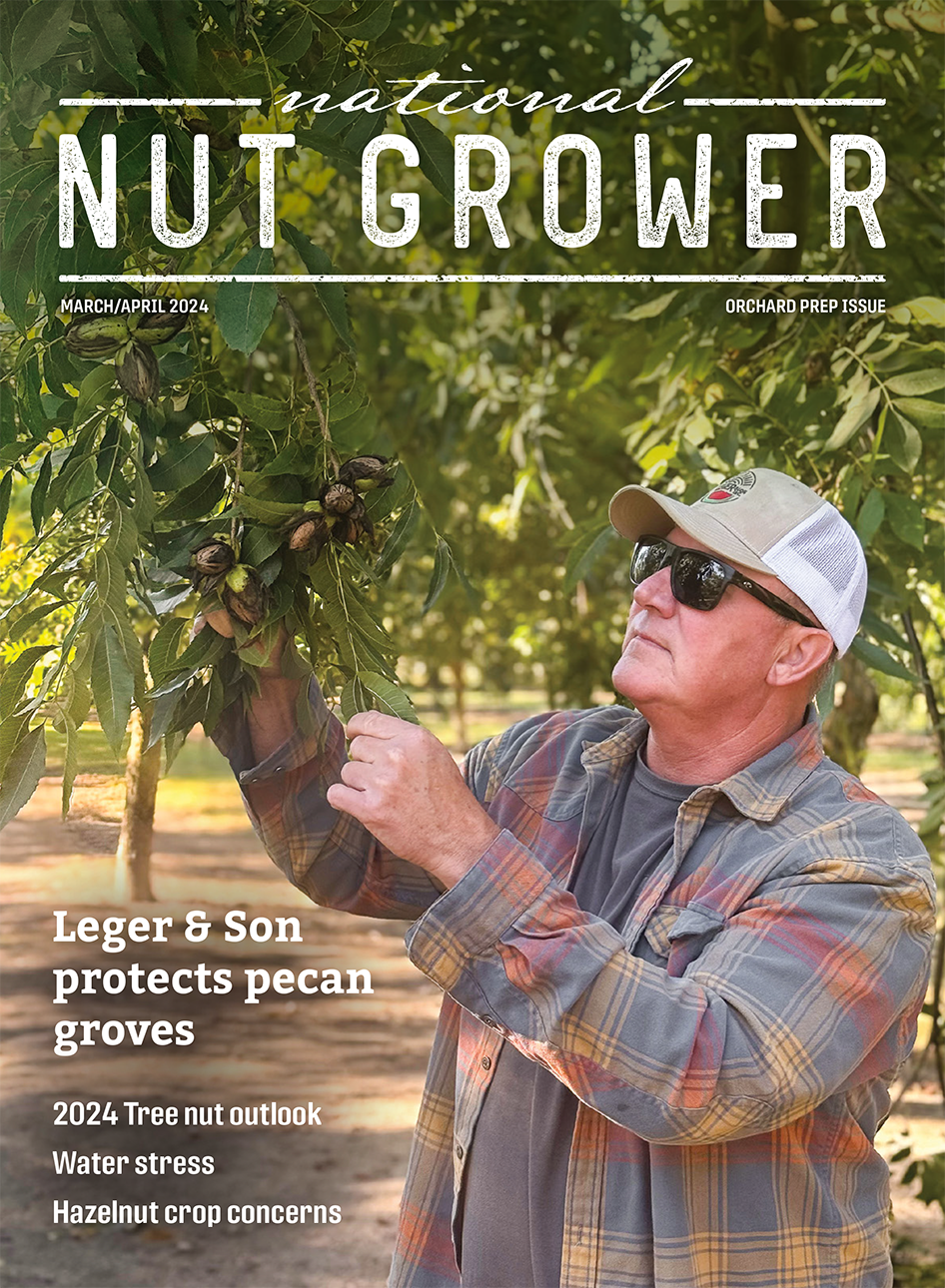Feb 9, 2023Disease management in almond in tight budget year
In a tight budget year, getting the best results, affordably, is vital to delivering the crop this year and next year. The possibility of increased disease pressure this year (2023 is off to a wet start) compared to the last three years makes this even more important. The following are some considerations going into the 2023 crop year.
Overall strategy: Preventative treatment (i.e. spraying before rain or dew) with the right fungicide(s) should give better disease control compared to spraying after infection once symptoms appear. Why? 1) Better spray coverage is possible early in the season (less canopy interference with spray movement), and 2) disease pressure is low, and control should be easier. Infection chances are often greater earlier in the season when more rain falls, on average, than later in the season. *
Brown rot: At least one, carefully applied, every-row spray at 30-50% bloom if there is no to very little rain during bloom. Two sprays are recommended if it is a wet bloom, one at ‘pink’ (not dormant bud swell) and one at full bloom.
Green fruit rot: In a wet, cool bloom, target green fruit rot with full bloom fungicide spray. FRAC 3 fungicides (Tilt®, Indar®, Elite® and generics) are excellent brown rot fungicides, but largely ineffective on green fruit rot. There are many effective fungicides for green fruit rot (FRAC 2, 7, 9).
If bloom is warm (60o F plus) and wet, starting at pink bud, include a fungicide with good anthracnose activity (for example FRAC 3 materials) in the tank. The good news is that most fungicides used for brown rot (except FRAC 9 materials) have good efficacy on anthracnose.
Shot hole: This is a significant concern from full bloom through two weeks after petal fall. FRAC 3 fungicides give only “moderate and variable” control of this disease that can cause nut drop in cool springs when heavy infections spread to nuts with rain. Many other fungicides deliver good control when applied ahead of rain once leaf infections begin sporulating.
Once petal fall occurs, keep an eye on the weather and consult with a PCA regarding materials and timings. Refer to the ‘Fungicide Timing and Efficacy’ table for key disease control timings. Click HERE to view a link to a PDF of the current UC IPM Fungicide Timing and Efficacy publication.
Severe infections producing early defoliation (scab, rust, alternaria) can reduce yield NEXT year (2024) as flower numbers/nut set can be dramatically reduced.
Careful sprayer calibration/set up is important for good pest control. Spray must reach all parts of the canopy to deliver effective disease control. Aim and select nozzles so that at least two-thirds of spray volume goes out of the top half of the open nozzles. Check with water sensitive paper to confirm coverage.
Final thought: Staying ahead of a problem is generally better than playing catch up!
*When spraying once high levels of the disease are present, UC recommends not using single site materials or pre-mixtures of single site materials. Broad spectrum products (sulfur, captan, ziram, etc.) are recommended when allowed by the label.
– Franz Niederholzer, farm advisor, University of California Cooperative Extension; Sudan Gyawaly, integrated pest management advisor, University of California Cooperative Extension







